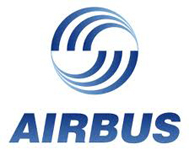Airbus AIRE2 demonstration flights a success

- Transatlantic Green Flights 17 successful trials with A380 achieved; almost one tonne fuel saving per transatlantic crossing, via optimized taxi-out and en-route trajectory;
- Green Shuttle 60 A320 flights achieve 270kg fuel saving per Paris-Toulouse round trip via optimized trajectories;
- VINGA RNP-AR 0.3 arrivals reducing track-distance by up to 11 nautical miles; fuel saving between 22kg and 90kg per flight in over 100 A320 trial flights.
The results of the second wave of European flight trials contributing to the Atlantic Interoperability Initiative to Reduce Emissions (AIRE) were presented at the Air Traffic Control (ATC) Global 2012 Conference and Exhibition in Amsterdam.
Over a period of 15 months, Airbus contributed to three projects of the initiative, which was steered by the Single European Sky Air Traffic Management Research (SESAR) Joint Undertaking (SJU). AIRE complements the development work within the SESAR programme. The objective was to unlock latent potential for improved flight efficiency through better coordination amongst all Air Traffic Management (ATM) stakeholders, which occurs with the use of current onboard and ground equipment.
Transatlantic Green Flights with A380
Airbus led the A380 Transatlantic Green Flights (TGF) project in partnership with Air France and the Air Navigation Service Providers (ANSPs) from the UK, Canada and the US (NATS, NAV CANADA and the FAA). The project looked at two aspects of optimizing the Air France transatlantic flights with the A380 between New York and Paris: two-engine taxi-out for the ground movement phase of flight and optimized transatlantic trajectory for the en-route phase of flight. Between December 2010 and April 2011, 17 successful trials were achieved, and the predicted combined fuel gain potential of almost one tonne per transatlantic crossing was confirmed. Enablers who apply this best practice on a regular basis were identified and provided as input to the related SESAR development work packages.
Green Shuttle with A320
Another project, Green Shuttle, was executed under the leadership of the French ANSP, DSNA, with Air France and Airbus as partners. It demonstrated improved fuel efficiency through 60 revenue flights by optimizing trajectories laterally and vertically during all phases of the La Navette flights between Paris-Orly and Toulouse, operated with the A320 family aircraft. This was made possible through better coordination amongst the five Air Traffic Control (ATC) centres concerned with these flights. 70kg per flight was saved for flights from Orly to Toulouse and 200kg per flight in the opposite direction. Airbus performed fly-ability analyses for the Continuous Descent Approach (CDA) into Toulouse and provided recommendations for the optimisation of this procedure.
VINGA validating implementation of new RNP arrival procedures with A320
Quovadis, the Airbus subsidiary offering services for the implementation of Required Navigation Performance (RNP) procedures, contributed to the VINGA project. The VINGA project was led by the Swedish ANSP, LFV, with Novair and Gothenborg Airport as further partners. VINGA optimised all phases of flight with an emphasis on the implementation of new RNP arrival procedures. These new procedures reduce track-distance (by up to 11 nautical miles), whilst lowering noise and facilitating Continuous Descent Operations (CDO) at Gothenburg Landvetter airport. Quovadis provided support to Novair to obtain authorisation to fly the new procedures where a fuel gain between 22kg and 90kg per flight was measured for the latter phase of the flight in over 100 trial flights. Quovadis explored specifically the flyability of a RNP-AR 0.3 arrival which transitioned into a traditional Instrument Landing System (ILS) approach. The benefits of this combination come from keeping the aircraft in a customised, narrow noise abatement arrival corridor - independent from ground radio navigation aids - and at the same time, taking advantage of the low visibility minima for ILS approaches.
In the meantime ATM stakeholders responded to the new SJU call for proposal for SESAR integrated flight trials and demonstration activities, which are scheduled to commence during spring 2012, and will last over a period of two years. In addition, Airbus has set up Airbus ProSky, a fully-owned subsidiary set up to coordinate ATM activities at a strategic level across all EADS companies, with a strong focus on the SESAR and NextGen programmes.
Airbus is the worlds leading aircraft manufacturer offering the most modern, innovative and efficient family of passenger airliners on the market, ranging in capacity from 100 to more than 500 seats. Airbus is an EADS company.




.png)


.jpg)

Comments
There are no comments yet for this item
Join the discussion